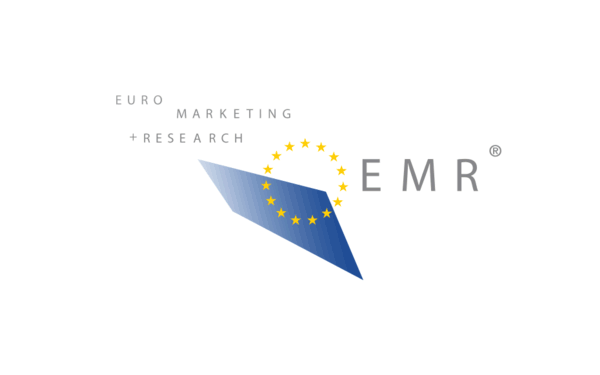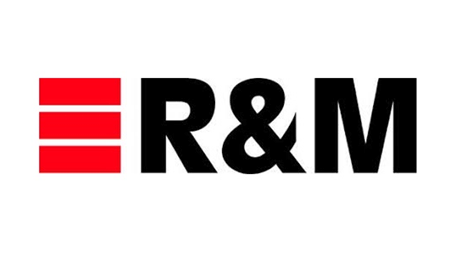R&M – David Robin new Country Manager at R&M France
David Robin brings strategic experience and know-how for growth markets such as smart buildings.
R&M, the globally active Swiss developer and provider of high-quality infrastructure solutions for data and communication networks, has appointed David Robin as its new Country Manager for France. He succeeds Emmanuel Beydon-Schlumberger, who is taking on a new role in Global Key Account Management. David Robin has 25 years of experience in the French IT, telecommunications, and building technology sectors. He specializes in sales, strategy, and leadership. David Robin holds a Master’s Degree in Embedded Systems Engineering and an Executive Master’s in Strategy from ESCP Europe. For more than 15 years, he held management positions at the French energy, digital, and building technology group SPIE.
«David has a deep understanding of the developments, technologies, and customer needs in our industry. With his expertise, he will optimally support the R&M team in France. We are very pleased to have him on board and to be able to further expand our commitment in France», says Michiel Panders, General Manager Europe excl. GAS at R&M.
R&M has been established in France for more than 25 years as a customer-focused, service-oriented, quality-conscious, and reliable provider. R&M’s connectivity systems for IT, digitalization, office, and building networks enjoy a high level of recognition among customers, specialist retailers, and installers. R&M is currently expanding its market presence to become a full-service provider of infrastructure solutions for data centers, public networks, and future markets such as Smart City and Smart Building.
Michiel Panders thanks Emmanuel Beydon-Schlumberger for his three years as Country Manager in France: «Manu has provided important strategic impetus and helped us to establish R&M in the French market further».
David Robin is impressed with the R&M team’s commitment to customers, collaboration, and depth of expertise.
He emphasizes: «R&M offers innovative and mature solutions for the demands of digitalization in factories, buildings, transportation, and cities. Also for growth markets like 5G. It will be a great challenge to further anchor these solutions in France».
SourceR&M
EMR Analysis
More information on R&M: See the full profile on EMR Executive Services
More information on Michel Riva (Chief Executive Officer, R&M): See the full profile on EMR Executive Services
More information on Michiel Panders (General Manager, Europe ex-DACH, R&M): See the full profile on EMR Executive Services
More information on David Robin (Country Manager, France, R&M): See the full profile on EMR Executive Services
More information on Emmanuel Beydon-Schlumberger (Senior Global Key Account Manager, R&M): See the full profile on EMR Executive Services
More information on ESCP Europe: https://escp.eu/ + Established in 1819, ESCP Business School is the world’s first business school. Its mission is to develop, the next generation of transnational business leaders, preparing them to embrace the opportunities offered by cultural diversity.
More information on Prof. Léon Laulusa (Dean & Executive President, ESCP Europe): https://escp.eu/governance + https://www.linkedin.com/in/leon-laulusa-152a5794/
More information on SPIE: https://www.spie.com/en + SPIE is the independent European leader in multi-technical services in the areas of energy and communications. Our 55,000 employees are committed to achieving the energy transition and responsible digital transformation alongside our customers. Through the key figures for 2024, find out how SPIE is part of the solution in each of these areas!
As a provider of innovative green solutions, SPIE supports its customers in the design, maintenance and operation of their energy and digital networks. Our shared objective is to fight climate change and adapt the living environment by accelerating the environmental transition.
- € 9.9bn Revenue in 2024
- 49% Green share of 2024 turnover according to the EU taxonomy for sustainable activities
- +25,000 customers, of which 70% are repeat customers
- 55,000 employees in 2024
More information on Gauthier Louette (Chairman and Chief Executive Officer, SPIE): https://www.spie.com/en/about-us/spies-governance/executive-committee + https://www.linkedin.com/in/gauthier-louette-33a3b18/
EMR Additional Notes:
- 4G, 5G and 6G:
- 5G enables a new kind of network that is designed to connect virtually everyone and everything together including machines, objects, and devices.
- First generation – 1G
1980s: 1G delivered analog voice. - Second generation – 2G
Early 1990s: 2G introduced digital voice (e.g. CDMA- Code Division Multiple Access). - Third generation – 3G
Early 2000s: 3G brought mobile data (e.g. CDMA2000). - Fourth generation – 4G LTE
2010s: 4G LTE ushered in the era of mobile broadband.
- First generation – 1G
- 5G has started hitting the market end of 2018 and will continue to expand worldwide unleashing also a massive 5G IoT (Internet of Things) ecosystem.
- 5G speed tops out at 10 gigabits per second (Gbps).
- 5G is 10 to x100 faster than what you can get with 4G.
- The main evolution compared with today’s 4G and 4.5G (aka LTE advanced, LTE-A, LTE+ or 4G+) is that, beyond data speed improvements, new IoT and critical communication use cases will require a new level of improved performance.
- For example, low latency provides real-time interactivity for services using the cloud: this is key to the success of self-driving cars, for example.
- 5G vs 4G also means at least x100 devices connected. 5G must be able to support 1 million devices for 0.386 square miles or 1 km2.
- Also, low power consumption is what will allow connected objects to operate for months or years without the need for human assistance.
- Unlike current IoT services that make performance trade-offs to get the best from current wireless technologies (3G, 4G, Wi-Fi, Bluetooth, Zigbee, etc.), 5G networks will be designed to bring the level of performance needed for massive IoT.
- 6G (sixth-generation wireless) is the successor to 5G cellular technology. 6G networks will be able to use higher frequencies than 5G networks and provide substantially higher capacity and much lower latency. One of the goals of the 6G internet is to support one microsecond latency communications. This is 1,000 times faster — or 1/1000th the latency — than one millisecond throughput.
- The 6G technology market is expected to facilitate large improvements in the areas of imaging, presence technology and location awareness. Working in conjunction with artificial intelligence (AI), the 6G computational infrastructure will be able to identify the best place for computing to occur; this includes decisions about data storage, processing and sharing.
- It is important to note that 6G is not yet a functioning technology. While some vendors are investing in the next-generation wireless standard, industry specifications for 6G-enabled network products remain years away. 6G internet is expected to launch commercially in 2030.
- 5G enables a new kind of network that is designed to connect virtually everyone and everything together including machines, objects, and devices.


